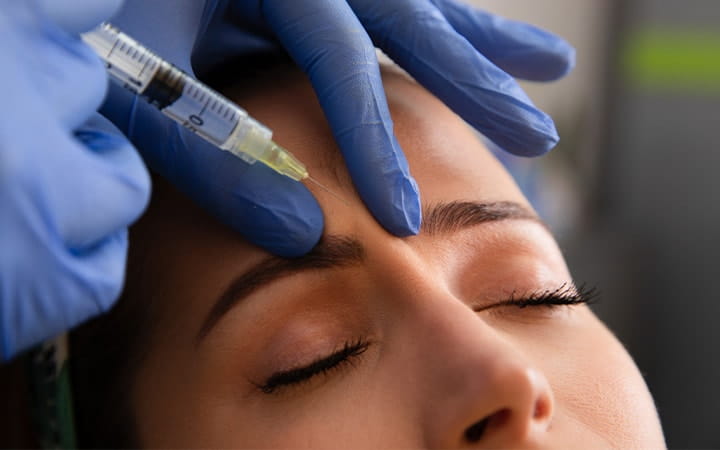Botox is not just a cosmetic procedure used to smooth fine lines and wrinkles; it also has many other clinical uses, including as a treatment for migraines. Botox was FDA-approved as a migraine treatment over a decade ago, and since then has provided relief for thousands of migraine sufferers.
Just a small amount of Botox, injected into various areas of the head and neck every few months, can significantly decrease migraine frequency and severity, and can greatly improve a migraine sufferer’s quality of life.

How Does It Work?
Botox (onabotulinumtoxin A) is a toxin that works by blocking the neurotransmitters that tell your muscles to contract. When used in small doses, it can temporarily paralyze the muscles that contribute to or worsen migraine headaches. Botox is suitable for anyone 18 years or older who has been diagnosed with migraine headaches and suffers 15 or more headache days per month.
These migraines should be debilitating enough to interfere with work, school and social events. Patients should also have tried other migraine medications without sufficient improvement in symptoms.
Botox for migraines is a simple outpatient procedure. With the patient seated in a chair, Dr. Manvar will inject 5 units of Botox using a tiny needle at various locations in the scalp – including the forehead, the sides and back of the head – as well as in the neck and the trapezius muscles (back of the neck and shoulders). The procedure can be modified based on the patient’s needs – adding more or less Botox to areas depending on where migraines usually occur.
A Significant Improvement in Migraine Symptoms
Botox treatments are typically given every 90 days. The majority of patients will see at least a 50% decrease in both frequency and severity of migraine headaches while undergoing Botox treatments.
Botox can usually stop other preventive migraine medications, such as calcitonin gene-related peptide (CGRP) inhibitors, but will want to continue to have an abortive medication on hand in the event of a migraine attack. Abortive medications include over-the-counter and prescription non-steroidal anti-inflammatory drugs (NSAIDs), triptan medications such as Maxalt, Relpax or Imitrex, and some abortive CGRP inhibitors such as Ubrelvy and Nurtec.
Other Therapeutic Uses for Botox
There are numerous other clinical uses for Botox in addition to migraine. These include treating conditions such spasticity (increased muscle tone or stiffness), overactive bladder, hyperhidrosis (excessive sweating), strabismus (crossed eyes), and temporomandibular joint dysfunction, or TMJ (pain in the jaw joint and surrounding muscles).
Because TMJ affects some of the same muscles as migraines, patients being treated for migraines potentially find some relief from TMJ symptoms as well.
A Life-Changing Treatment
Patients interested in Botox for migraines should look for a certified headache specialist like Dr. Manvar. He is an expert in evaluating headaches and recommending personalized treatments, and are specially trained in administering Botox injections. Call us today to learn more about Botox and how we can treat your migraines!

